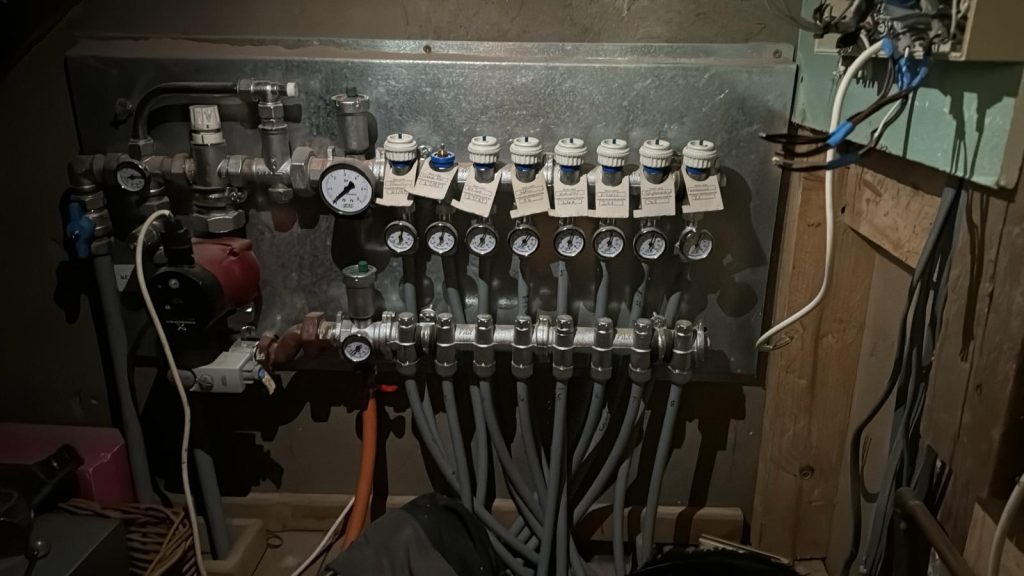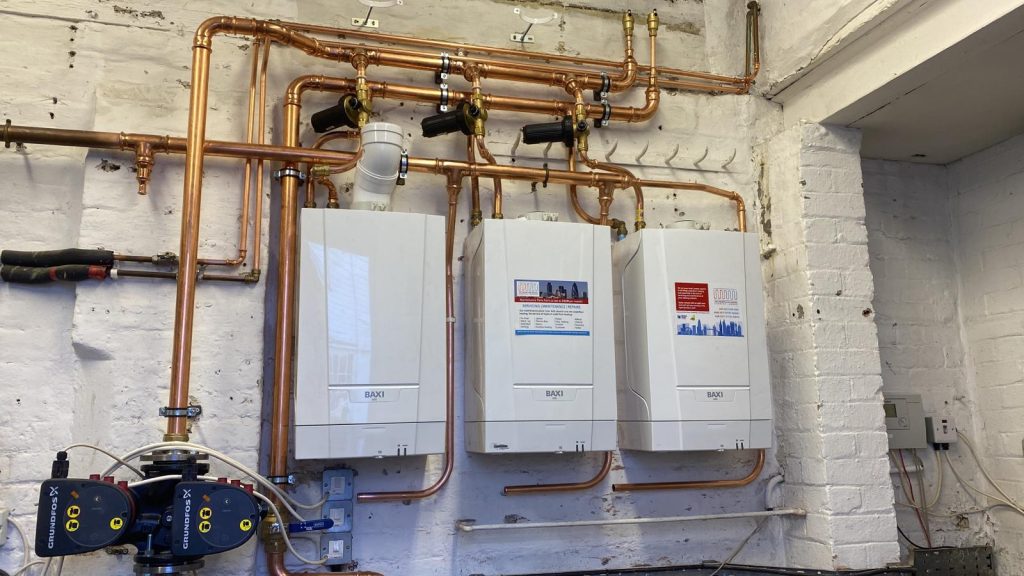London is home to some of the most architecturally significant buildings in the UK, many of which are listed for their historical and cultural value. From elegant Georgian terraces in Bloomsbury to grand Victorian townhouses in Kensington, these properties offer a timeless charm that continues to attract buyers, tenants and investors.
However, living in a listed building presents unique challenges—particularly when it comes to modernising heating systems. Traditional radiators can be inefficient, unsightly, or poorly suited to modern energy needs. As a result, many homeowners are exploring the possibility of retrofitting underfloor heating (UFH) in listed London properties.
This guide explores the feasibility of doing so, the permissions required, technical challenges involved, and how to approach such a project while preserving a building’s heritage value.

What Is a Listed Property?
In the UK, a listed property is one that has been placed on the Statutory List of Buildings of Special Architectural or Historic Interest. In London, these include homes from every era—Georgian, Regency, Victorian, Edwardian, and post-war modernist styles.
Listed status restricts what modifications can be made to the structure, both internally and externally. There are three grades:
- Grade I – Buildings of exceptional interest
- Grade II* – Particularly important buildings of more than special interest
- Grade II – Buildings of special interest, warranting every effort to preserve them (the majority of listed homes in London fall into this category)
Any alterations to a listed property, including heating upgrades, require Listed Building Consent (LBC).
Why Consider Underfloor Heating?
Underfloor heating provides an efficient, invisible alternative to radiators and can enhance both the comfort and energy performance of period homes. For listed buildings, UFH offers several benefits:
- Preserves interior aesthetics – No need for modern radiators disrupting the historic appearance of a room.
- Energy efficiency – UFH operates at lower temperatures and can help reduce overall energy consumption.
- Improved thermal comfort – Provides even heat distribution, reducing cold spots often found in tall-ceilinged period rooms.
- Increased usable space – Frees up wall space, particularly valuable in narrow hallways and smaller rooms.
Despite these advantages, installing underfloor heating in a listed property is more complex than in a modern home and must be carefully planned.
Can You Retrofit Underfloor Heating in a Listed London Property?
Yes, it is possible, but it depends on several factors:
- The historical significance of the floor – If the existing floorboards, tiles, or substructure are original or of historic interest, removing or altering them may not be permitted.
- The floor construction – Listed buildings often have suspended timber floors, which require a different approach to UFH than concrete slabs.
- Access and construction constraints – Thick walls, delicate plasterwork, and limited service routes can all affect installation.
- Conservation approval – Retrofitting any form of heating must be justified to and approved by the local conservation officer.
In general, it is easier to install UFH in rooms that are already being refurbished, particularly where flooring is being lifted or replaced.
Understanding the Consent Process
Before any work can begin, you must obtain Listed Building Consent (LBC) from your local planning authority. This is a separate process from standard planning permission and is legally required for any work that affects the character or fabric of a listed building.
LBC applications must demonstrate:
- That the works are necessary (e.g. to improve efficiency or habitability)
- That the impact on the building’s historic features will be minimal
- That alternative options have been considered
- That appropriate materials and methods will be used
It’s advisable to commission a heritage consultant or architect with experience in listed buildings to support your application and liaise with conservation officers.
In some cases, you may need to submit floor plans, detailed drawings, heritage statements, and method statements for the UFH installation.

Which UFH Systems Are Suitable for Listed Buildings?
There are two main types of underfloor heating systems, and each has retrofitting options suitable for heritage buildings.
1. Electric (Dry) Underfloor Heating
Electric systems use heating mats or cables laid beneath the floor finish. They are best suited for:
- Smaller spaces (e.g. bathrooms, utility rooms)
- Properties with restricted floor height
- Situations where the original floor can remain in place (e.g. beneath stone or tiled surfaces)
Electric systems have minimal build-up, making them attractive in buildings where changes to floor levels are discouraged. However, they are more expensive to run and less suitable for large areas or whole-house heating.
2. Water (Wet) Underfloor Heating
These systems circulate warm water through pipes embedded in a subfloor. They are more efficient and better suited for:
- Full-room or full-house heating
- Integration with heat pumps or modern boilers
- Projects where new floor finishes are being laid
Low-profile wet systems are available that can be installed above existing subfloors, with depths as low as 18mm. These are particularly useful in listed properties where floor excavation is not permitted.
The choice between systems will depend on available floor depth, intended use, insulation levels, and the layout of your heating system.
Installation Techniques That Respect Heritage Fabric
To satisfy conservation officers and ensure best practice, careful techniques must be used:
Preserving Original Floorboards
If the existing timber floor is historically significant, it may need to be preserved. In this case, UFH can sometimes be installed beneath a floating new floor layer, preserving the original boards beneath. This is common in projects where floors are being overboarded for insulation anyway.
Avoiding Permanent Fixings
UFH components, especially in electric systems, should avoid permanent fixings to historic fabric. Loose-laid or floating methods are often required.
Using Reversible Systems
Where possible, UFH should be installed in a way that is reversible—that is, it can be removed in future without damaging the original structure. Conservation officers prefer solutions that do not involve removing historic material entirely.
Insulation and Moisture Control
In heritage buildings, breathable insulation and materials are critical. Mineral wool, wood fibre boards, or vapour-permeable membranes may be required instead of modern closed-cell insulation. Ventilation must also be maintained to prevent damp or rot.
Common Scenarios in London Homes
Different types of listed properties across London pose unique challenges:
- Georgian townhouses in Westminster or Clerkenwell may have fragile lath-and-plaster ceilings below the floor, complicating pipe routing.
- Victorian villas in Islington or Camden often have suspended timber floors, suitable for retrofitting with insulation and UFH if floorboards are lifted carefully.
- Mansion flats in South Kensington may have solid floors ideal for slimline electric mats, but require coordination with freeholders and building management.
In each case, the solution must be bespoke, balancing heating performance with the duty to preserve original fabric.
Benefits of Retrofitting UFH in a Listed Property
Though more complex, successful UFH retrofits in listed buildings offer significant rewards:
- Improved thermal comfort in rooms with high ceilings or large volumes
- Better energy efficiency, especially when paired with insulation and smart controls
- Minimal visual impact, retaining period aesthetics and design integrity
- Increased property value, as buyers increasingly value sustainable, comfortable homes
UFH also works particularly well in spaces where visible radiators would detract from decorative elements such as panelling, fireplaces, or ornate plasterwork.
Cost Considerations
The cost of retrofitting underfloor heating in a listed property is typically higher than in a non-listed home. Factors influencing cost include:
- Additional design and consultancy fees
- The need for conservation-grade materials
- Specialist labour
- Potential delays due to planning processes
However, these costs are often offset by long-term savings on heating bills and the increased comfort and appeal of the property.
Final Thoughts
Retrofitting underfloor heating in a listed London property is not a decision to take lightly—but with the right approach, it is both possible and worthwhile. The key lies in balancing modern efficiency and comfort with sensitivity to the building’s historical character.
With careful planning, expert advice, and the appropriate permissions, homeowners can enjoy all the benefits of a warm, efficient home without compromising the integrity of their period property.
If you are considering such a project, it is essential to engage specialists in heritage construction, secure listed building consent early, and choose a UFH system that fits your home’s structure and conservation requirements.
